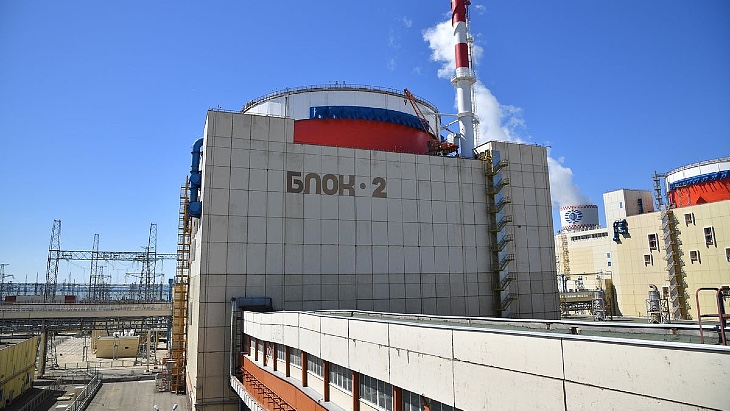The fuel assemblies with experimental fuel elements are undergoing a standard cycle of nuclear fuel operation for Russian VVER-1000 reactors - three fuel campaigns of 18 months each. During the next scheduled preventive maintenance at the power unit, the fuel will be unloaded from the reactor core, and the fuel elements will undergo a post-reactor research programme.
Accident tolerant fuel (ATF) is a term used to describe new technologies that enhance the safety and performance of nuclear fuel. ATF may incorporate the use of new materials and designs for cladding and fuel pellets.
In 2021 three fuel assemblies of the TVS-2M design were loaded into the reactor core, each with 12 of the new fuel elements. Six were manufactured using 42KhNM chromium-nickel alloy as a structural material and six were were made with chromium-coated zirconium alloy cladding. Rosatom said: "This technological solution makes it possible to either completely eliminate or significantly slow down the development of a steam-zirconium reaction in the reactor core in the event of an emergency."
The final stage for qualification of the ATF fuel will be the loading of fuel assemblies containing 312 of the new fuel elements. Ahead of this, a production site for applying chromium coatings to shells made of traditional zirconium alloy has been created at the Chepetsky Mechanical Plant in Glazov, Rosatom says, and a pilot batch of chromium-plated fuel elements has been manufactured and accepted.
Alexander Ugryumov, Senior Vice President for Scientific and Technical Activities of Rosatom's fuel company TVEL, said: "The ATF development programme has yielded another important result. It turned out that chrome-plated claddings, due to their surface properties, can 'close' the missing technological link for creating a completely unmanned automated production of fifth-generation VVER fuel - the TVS-5 design. This fuel design for VVER-1200 reactors is specially designed in such a way as to exclude a number of technological operations during its assembly, which still involve personnel, and not just automation. By analogy with the fabrication of fuel for fast neutron reactors, unmanned industrial production is necessary to close the nuclear fuel cycle for standard thermal light-water reactors. This is an opportunity to use as fuel not only enriched uranium, but also materials extracted from irradiated fuel - regenerated uranium and plutonium."





_30199.jpg)
_72306.jpg)

_49562.jpg)





